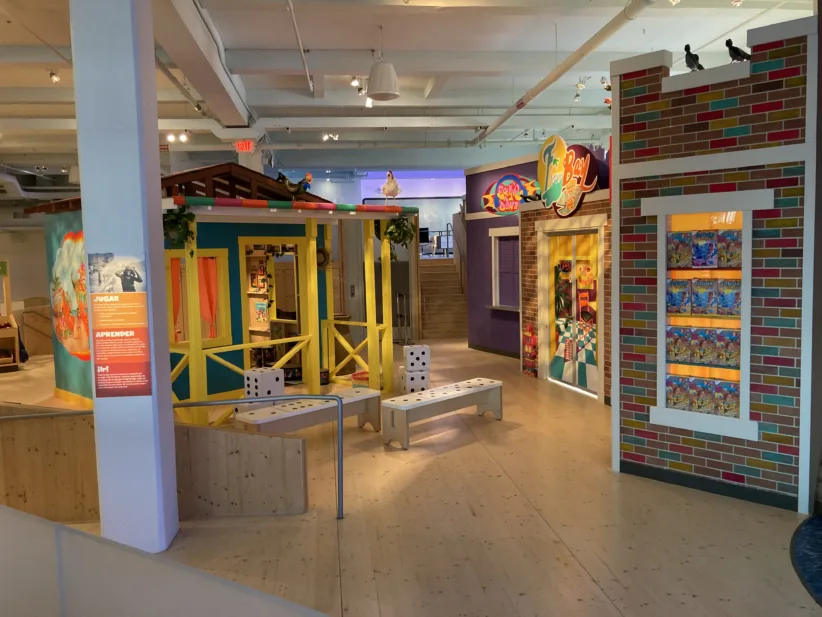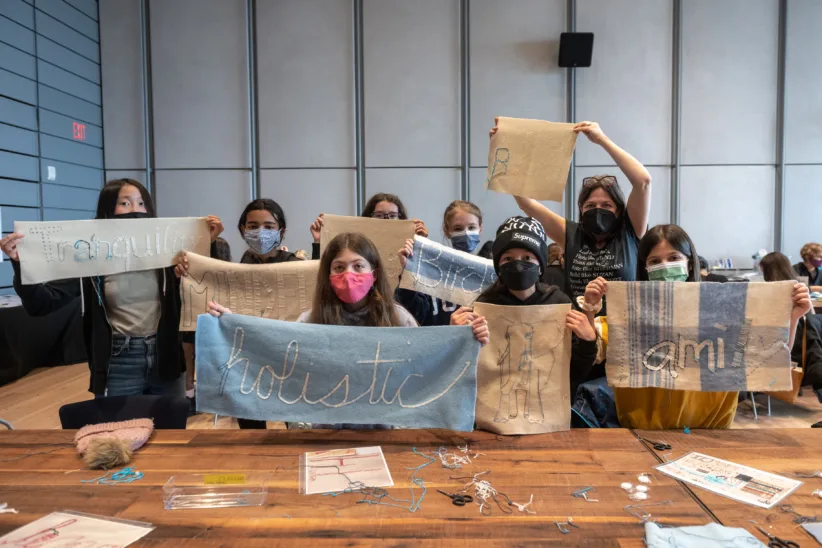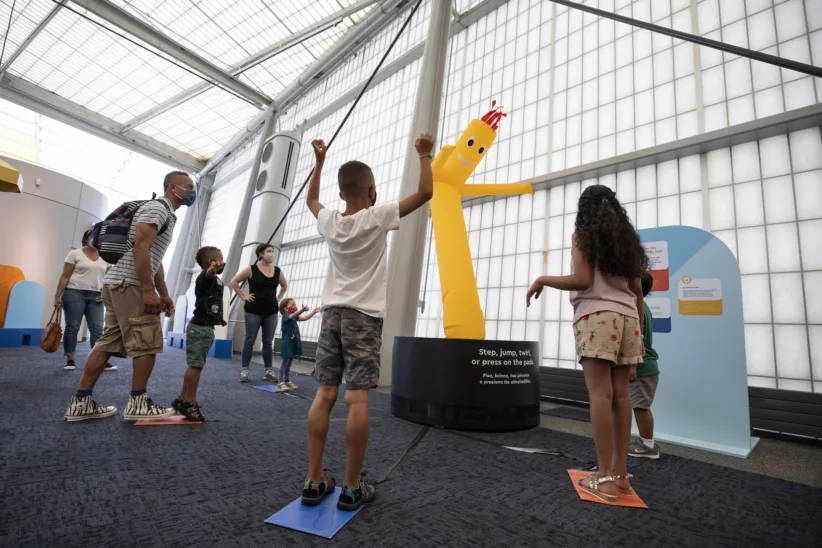From babies to big kids, how to make museum visits a success.
Museums are for everyone,” says Lisa Libicki, a museum educator who teaches at the Museum of Modern Art, the Whitney Museum of American Art, and the Morgan Library & Museum. There’s no need to hold off on museum visits until your child reaches a certain age: Babies too young to babble, inquisitive toddlers, and independent big kids can all appreciate the world-expanding wonders of New York City’s museums.
Start visits early to build familiarity and affection—and remove any intimidation that can accompany museums’ hushed-tone atmosphere. “You want to train your child to really be a good museumgoer, and establish a love of museums from an early age,” says Jane Kloecker, the director of Science and Nature Programs and Family Initiatives for the American Museum of Natural History’s Education Department.
Don’t be intimidated by Kloecker’s use of the word “training”: It can be as simple as modeling museum-appropriate behavior or pointing out that labels on the wall provide information that enriches the experience. No art degree is required! Libicki points out that current museum pedagogy favors shared exploration and conversation over parents talking at children. “You don’t have to have all the answers,” Libicki says. “You can wonder with them.”
Good Advice for All Ages
To avoid tedious visits punctuated by seemingly endless whining, follow these common-sense tips:
Don’t overstay: “Don’t ever go past the time when they’re losing interest or are tired,” Kloecker cautions. “Their little legs do get tired!” Many of the museums in New York sprawl across avenues, with vast collections—so resist the urge to view the whole thing in one trip. “I think people try to do too much,” Kloecker says. “You can go and have a wonderful trip to the museum and only look at one diorama—and then leave.”
Plan ahead: Check the museum website for any kid-friendly tours, workshops, and activities. The Morgan, for instance, has a story time.
Choose your time wisely: Crowds and children aren’t generally a good combination. Opt for early morning visits when possible, but also plan around your child’s nap schedule.
Also, keep in mind your child’s age and personality. What delights a toddler won’t necessarily engage an 11-year-old and may be meaningless to babies. For a successful trip, cater to your child’s age and ability.
For Babies: Stimulate Their Senses
At just a few months, babies can see colors and shapes, and track a moving object. A trip to the museum opens up a world of stimulation for babies, and can also give parents a much-needed social opportunity to maintain existing friendships and build new ones.
Build early skills: During colder months, visiting the museum provides a new, stimulating environment while also helping stave off cabin fever. On a grander scale than a picture book, the museum offers visual stimulation. Narrate the sights to build baby’s language skills.
Look for stroller tours: Diaper blowout? Fussy baby? The participants on stroller tours get it: They’re either babies and toddlers themselves, or sympathetic parents and caregivers. The child-friendly environment of stroller tours, Libicki says, makes it easy to “have culture and interaction with other families.”
Go with a friend of your own: Being a new parent can be isolating, and pre-baby social activities—boozy brunches or late nights—may no longer make sense or even be possible. Museum trips are a good option for social time with other grown-ups. And if you go to the same museums when the kids are older, you will all appreciate your familiarity with their quieter areas and the bathrooms with the shortest line.
For Toddlers: Offer Guidelines and Activities
Curious and energetic, toddlers will get a lot out of the museum’s environment, as well as its sensory programs. Just make sure to leave before they grow tired, bored, or over-stimulated.
Explain appropriate behavior: “Starting with toddlers and young children, you want to show them what’s appropriate behavior in a museum so they can really enjoy going,” Kloecker advises. Let them know whether touching is allowed, and discuss museum-level voices and the need to walk, not run. Laying out this groundwork means less scolding from you, and prevents reprimands from guards.
Turn it into it a game: Use activities such as I Spy to help your child explore the museum and interact with what they find there. “Working with a familiar framework that your kid is used to for exploring the world works really well for exploring art,” Libicki says. You can make up songs, play scavenger hunts, or choose something to tally up—for example, “How many baby animals do you see?” or “Do you see 10 squares on that painting?” These games encourage interaction, Libicki says, and you may find yourself surprised by what your child sees in the artwork and what they’re capable of communicating.
Make it a playdate: Have your child bring along a friend. This allows toddlers to experience the museum with someone at their same developmental level. “Two kids of the same age can have a meaningful conversation together,” Libicki says.
For Big Kids: Provide Choices
Should you visit an interactive, kid-friendly museum or a look-and-talk museum? Let your child’s maturity level and preferences guide you.
Foster independence: “Once kids are older, let them have some agency in where you’re going,” Libicki recommends. Big kids can pick where you’ll go in the museum (you can go online together to map out the trip) or which museum you’ll visit in the first place. “Let the child explore and discover things on their own—let them direct the trip a bit,” Kloecker advises.
Seek out kid-friendly audio guides: Many museums have audio guides, apps, or activity sheets tailored for kids. This independent interaction will make kids feel cool, while still encouraging them to look and experience, Libicki says.
Have kids create art: Look for benches situated by the artwork or other exhibits, and have kids use pencil and paper or even a tablet to sketch and draw. Many museums will allow colored pencils—just leave the watercolors at home. “If kids like to sketch or write and reflect, you can label one notebook ‘museum journal,’ and then you have a place to look back at all your experiences at the museum,” Libicki suggests.
REALTED: Find Other Fun Activities In Your Area
Sign up for our newsletter to receive the latest updates on events and family activities near you.
Main photo:The Hudson River Museum in Yonkers
Photo by Steve Turner, for Great Houses of the Hudson River, Little Brown, NY.




















